“Keep breathing!”
Dr. McCole rolls his eyes, convinced that telling someone to breathe won’t help them run any further. Emma defends her statement, arguing that it encourages deeper breathing and increased oxygen supply. Kerrin wavers between stances, seeing the redundancy of an obvious statement but unable to disprove Emma’s theory. Matt starts using scientific terms that no one is prepared to comprehend at this early hour. Kaitlyn and Allison continue to encourage the participant. Alicia laughs…. And Dr. McKenzie and Dr. Laird ignore us all, discussing the training protocol we will start on June 2nd.
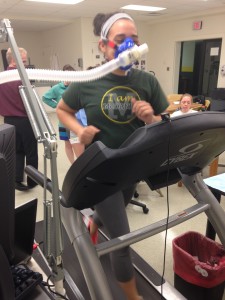 This is what EPE summer research has revolved around this first week. Six students and three professors collaborating to explore the differences between high-intensity interval training and traditional aerobic training over a three-week training program.
This is what EPE summer research has revolved around this first week. Six students and three professors collaborating to explore the differences between high-intensity interval training and traditional aerobic training over a three-week training program.
These first two weeks make up our pre-testing phase of research in which we recruit participants and create a performance baseline comprised of a questionnaire/health history, underwater weighing for body composition, VO2max testing on a treadmill, and an endurance run at the established VO2max.
This week has taught us a few key things:
- We love working as a team! It didn’t take long to discover that this self-proclaimed “HIIT team” has great cohesiveness, camaraderie, and chemistry. This wouldn’t be nearly as fun without each other.
- On the first day, “crash course” is a real thing. You feel as if you just learned an entire semester’s worth of information. From compiling literature reviews to learning each test procedure, our brains were thoroughly saturated at the end of the first day.
- Our learning curves are huge! We’ve gotten very good at things we do not usually do very quickly, including: taking blood pressure at rest and directly following exercise, taking small blood samples for lactate measures, running various programs on the computers for the different tests, and speaking professionally to participants in the study.
- Dr. McKenzie loves running multiple VO2max tests… Just kidding!
Breathing is an essential part of HIIT Team’s first week of research. Whether it’s making sure enough air is blown out in underwater weighing, getting your maximal oxygen intake in each of the two run tests, or the research team taking a deep breath over the course of our long days, we just keep breathing!
We’re looking forward to next week, where we will continue pre-testing and begin placing participants into the different training programs! Tune in next week to read about the end of the pre-testing phase!
Thanks for reading! HIIT Team signing off!

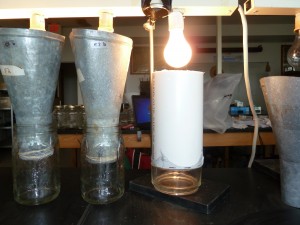
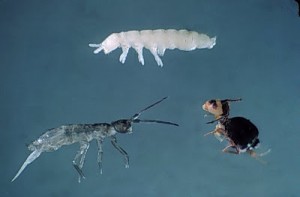


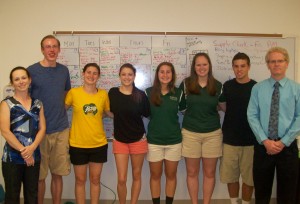
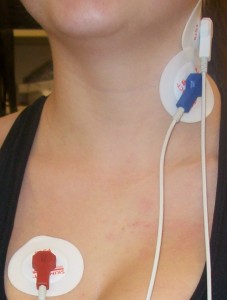
 We like to treat our subjects well so we offer them a bottle of ice cold water afterwards. Hope all is well.
We like to treat our subjects well so we offer them a bottle of ice cold water afterwards. Hope all is well.